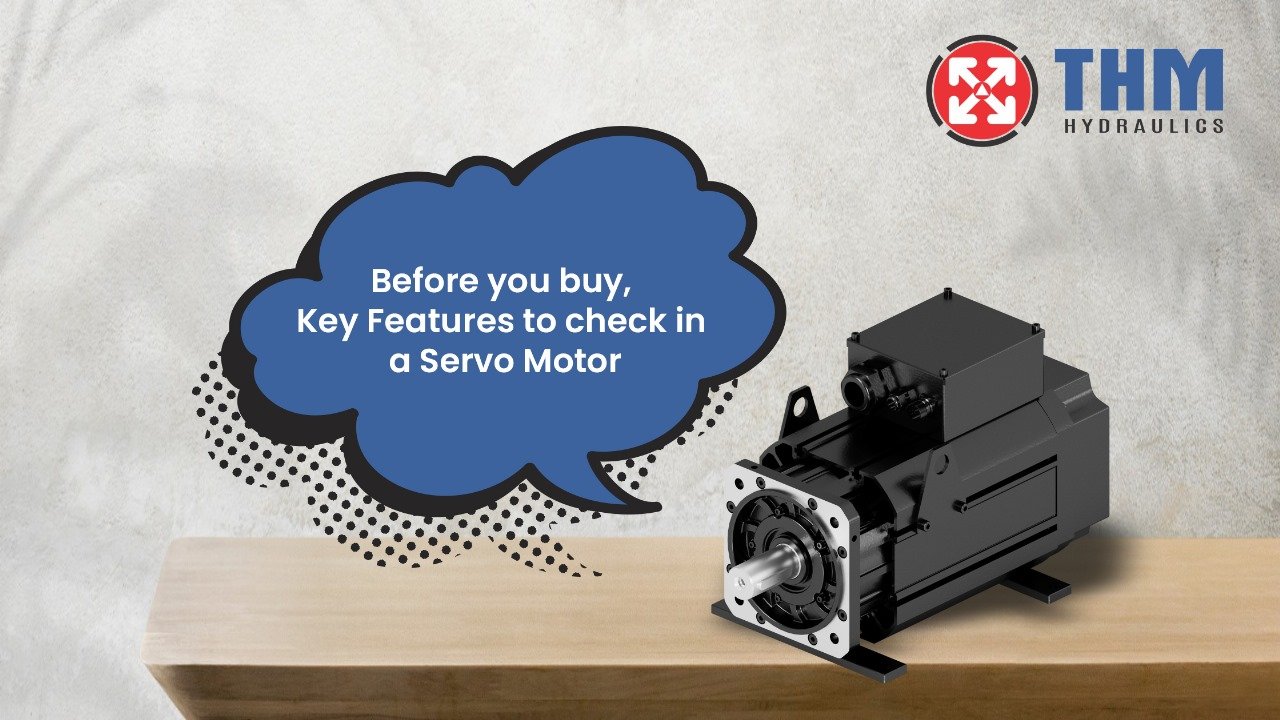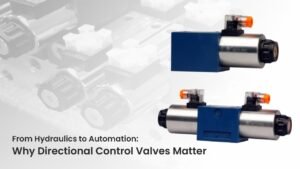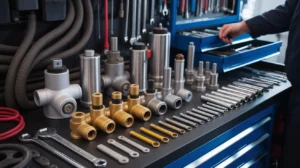Automation, robotics, CNC and 3D printing all rely heavily on servo motors. Selecting the right servo motor can help your application perform better, be more accurate and be more reliable. This guide explains what to look for in a servo motor and provides uses for servo motors and FAQ’s.
Points to Look for Before You Buy
1. Torque Rating
The reason it matters: Torque tells you how much weight your motor can handle. When applications require more strength, high torque servo motors are necessary for industrial use.
- Quantified as Nm (Newton-meters).
- They are made for robotic arms, CNC machines and automated production lines.
2. Speed and Response Time
- Identify motors that can move fast from a stop.
- Look for servo motors that can accelerate quickly from a stop.
3. Built-in Encoder for Precision
- Many of today’s servo motors have an encoder built in.
- Make sure the servo motor you purchase has an encoder for precise control.
- Lets you receive more accurate feedback.
- Robotics and CNC applications need them.
4. Control Compatibility
- Check that the motor is suitable for your control system.
- These motors can be use with Arduino or Raspberry Pi (servo motors Arduino).
- Industrial Programmable Logic Controllers (PLCs) or controllers based on PC technology
- Advance motor control is possible with servo drive support.
5. Voltage & Power Requirements
- See if your application can be run on:
- Projects using Arduino are referred to as 5V.
- Industrial machines usually use either 24V or 48V.
- AC or DC power can be use (AC servos for the best results).
6. Size and Form Factor
- Every application requires a different screen size.
- Small servo motors are use in small robots.
- The right size for 3D printers and camera gimbals
- The biggest ones are use for CNC and manufacturing machines.
7. Mounting and Shaft Type
Make sure the motor can be attached firmly and the shaft type (D-shaft, round or spline) is compatible with your system.
8. Durability and Build Quality
- Heat-resistant materials
- IP65 or a higher dustproof or waterproof rating for use in harsh or outdoor areas
- Made to withstand shocks from industrial or mobile situations
Uses for Servo Motors
The Best Servo Motor for Robotics
- Being very accurate and quick to respond
- Small and lightweight products
- Examples: Motors built for industrial use are called THM industrial-grade motors
- CNC Machines with Affordable Servo Motor
- Motors that are built to be tough and have encoder feedback
- A lot of torque and steady performance
- Brands that are friendly to your budget are NEMA and Leadshine
Servo Motor for 3D Printer Axis Movement
- Silent operation
- Easy and accurate movement of the axis
- Works on both Cartesian and Delta-style printer types.
Servo Motor Working Principle
A servo motor’s operation is based on closed-loop feedback. This is the basic way it works:
- 1. The controller sends a command to the motor.
- 2. The motor shaft moves to the position that has been command.
- 3. A sensor inside the wheel (encoder) sends information to help keep the movement precise.
- 4. Power and direction in a servo motor are adjusted by feedback from the drive.
Ways to Choose the Right Servo Motor
- Be sure to know how much weight your truck will be carrying. Too much weight can be a waste and too little could cause the truck to fail.
- Refer to the datasheets: Examine all the details such as torque, speed and voltage.
- These are all good brands to consider: THM, Panasonic, Delta and Yaskawa.
- Will your project require additional motors in the future?
- Review comments and test results from Amazon and engineering websites.
Final Thoughts – Make an Inform Servo Motor Purchase
Before getting a servo motor, you should know what your application requires. If you are looking for a servo motor for robotics, robotics with an encoder, or a low-cost servo motor for CNC machines, selecting one with the features that matter most will save you time, money, and trouble.
Buy good quality motors from trusted brands like THM Huade, check the specifications, and confirm that your servo motor fits with your controller or servo drive. The right motor will help your project or machine work dependably and efficiently.
FAQs
For accurate positioning torque, servo motors are use. Usually use in robotics, CNC machines and automation systems.
The pins on the Arduino are Signal (control), VCC (power) and GND (ground). These provide a way for power and control signals to be input.
You can find servo motors that are AC or DC. DC servos are chosen for small projects and AC servos are used in industrial settings.
Servo motors use a close-loop system where feedback is involve. They get instructions from the controller and move to the right spot with the help of sensors.
Servo motors are better for high-speed, high-precision tasks with feedback control. Stepper motors are simpler and cheaper, good for low-speed or budget projects like basic 3D printe
Select servo for use in robotics, CNC and automation.
Choose stepper motors for 3D printers, simple motion systems and budget-saving projects.



